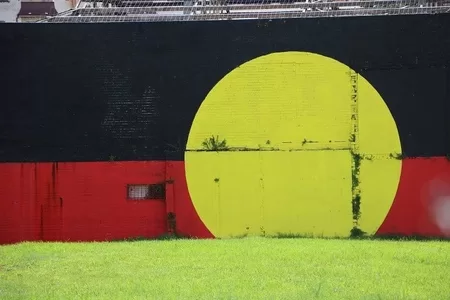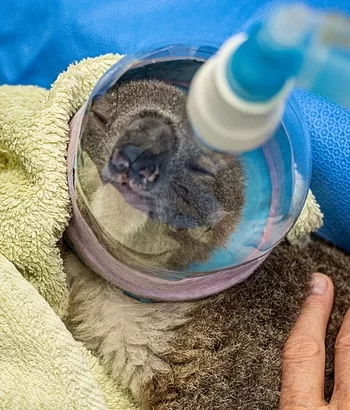The first Welcome to Country ceremony was at the inaugural Aquarius Festival at Nimbin in 1973, conducted by the last known initiated men of the Bundjalung people in the northern coastal NSW area, Uncle Lyle Roberts and Uncle Dickee Donnely.
The story about the first ceremony to welcome non-indigenous Australians to the land is one of awakening, listening and acting on sage advice, co-operation and acceptance. The rise of the counter culture and boomers asserting themselves coincided with the indigenous civil rights movement, the Vietnam war protests, the election of Gough Whitlam, and the rapidly changing world in the 1960s and 1970s.
Times they are changing
The late 1960s and early 1970s marked a transformative era that reverberated with societal upheavals, cultural revolutions, and a palpable shift in collective consciousness. The winds of change, fuelled by the fervour of civil rights movements, anti-war protests, and the emergence of countercultural ideologies, swept across the globe.
As traditional norms faced challenges and institutions grappled with dissent, a spirit of rebellion and experimentation unfolded, touching every facet of life. This period would witness groundbreaking advancements in civil rights, the women’s liberation movement, environmental activism, and a reimagining of artistic expression.
Against the backdrop of political turmoil and a quest for social justice, the late 1960s and early 1970s became a crucible for profound and lasting transformations that would shape the decades to come.
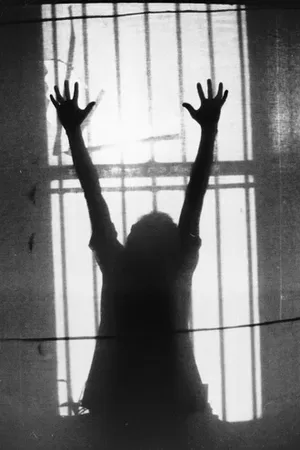

The emerging counterculture was embracing indigenous spiritual practices, including Eastern traditions and mysticism, still relatively unknown in the Western world. Indigenous people were commonly viewed as possessing inherent spiritual, ecological, tribal, and communal qualities — essentially embodying the core values that the counterculture aimed to embrace.
Globally, positive connections were being forged with Native Americans, diverse South American Indigenous communities, New Zealand Maori, and the Indigenous Peoples of Australia.
The Civil Rights movement in the USA pioneered models of dissent, shaping a “method, ideology, and language of protest” as African Americans raised their voices and protested ahead of subsequent movements.
Australia’s Indigenous population did not overlook the momentum of racial empowerment. In the 1960s, inspired by international events and fuelled by national organisation, Aboriginal communities gradually initiated a political awakening. They sought freedom from the vestiges of colonialism and reacted to the impacts of oppression at its worst and neglect at its best.
1967 Referendum
The 1967 referendum granted the Federal Government authority to enact specific laws for Indigenous Australians in states and decided that Indigenous Australians should be officially included in population counts for constitutional purposes.
The proposed amendments to the Constitution garnered substantial approval, securing 90.77% of the votes cast and receiving majority support in all six states. The Bill subsequently transformed into an Act of Parliament on August 10, 1967.
The 1967 referendum has taken on symbolic significance within the context of a period marked by swift social transformations in the 1960s, and credited with instigating political and social shifts in the nation’s conscience.
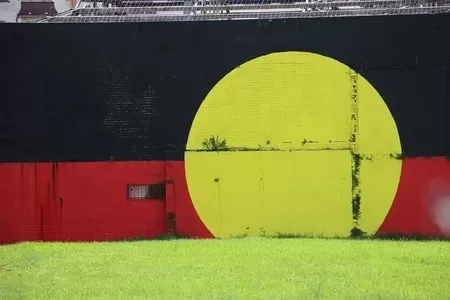


The newly found mobility saw as many as 32,000 Indigenous youth relocated to Redfern, Sydney, from 1967 to 1972.
The historical landscape was marked by political activism, not only within the student movement but significantly through demonstrations by Indigenous activists, exemplified by the establishment of the Tent Embassy in Canberra in 1972.
On January 26, 1972, four Indigenous men – Michael Anderson, Billy Craigie, Bertie Williams and Tony Coorey – erected a beach umbrella on the grounds opposite Parliament House in Canberra. Designating the umbrella as the Aboriginal Embassy, the men were protesting against the land rights policies of the McMahon government.
The beach umbrella was soon replaced by various tents and that became known Tent Embassy, still there today. Well-known Aboriginal activists spent time at the Tent Embassy including Gary Foley, Roberta Sykes, Chicka Dixon, John Newfong, and Gordon Briscoe.
Other well known activists of the time include:
* Australia’s first indigenous university graduate, Charlie Perkins, who led the the Freedom Rides in 1965;
* Pearl Gibbs, Jessie Street and Faith Bandler who campaigned for the 1967 referendum;
* Neville Bonner was selected to fill a temporary Senate vacancy for the Liberal Party in 1971 becoming the first Indigenous Australian to hold a seat in the Australian Parliament before he was voted in the 1972 election.
There are many, many others who raised the profile of Indigenous Australians and in doing so, raised the consciousness of non-indigenous Australians.
Rise of the counter culture
The Vietnam Moratorium protests that started in 1970 marked the most extensive public demonstrations in Australia’s history at that time.
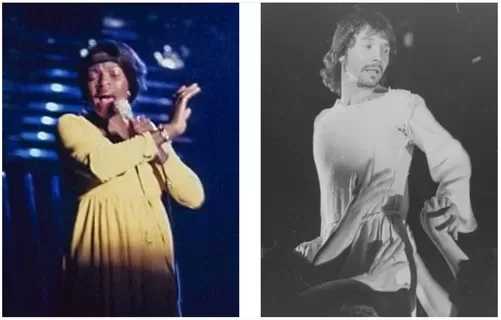

While the anti-war movement had been spearheaded by university students until this point, the moratorium saw the active participation of thousands of everyday, middle-class Australians. 40 percent of the population was under the age of 20 and in line for conscription.
Change was everywhere as the boomers began to come of age and express themselves – in fashion and music, musicals such as Hair and Jesus Christ Superstar and in politics.
It’s Time
The timing coincided favorably as Australia elected a new Prime Minister, Gough Whitlam, in 1972. Whitlam instigated substantial political reforms, largely in response to socialist protests, creating an optimistic atmosphere for the countercultural movement.
His noteworthy political changes included significant support for Indigenous people, highlighted by the establishment of the Aboriginal Arts Board within the Australian Council of the Arts (ACA).
Aquarius Arts and Lifestyle Festival
In 1973, the Aquarius Arts and Lifestyle Festival was organised by the Australian Union of Students (AUS) in the quaint New South Wales town of Nimbin.
Regarded as the ultimate expression of Australian counterculture, this event is credited with giving rise to the “Rainbow Region,” a locality in Northern NSW characterised by a concentration of alternative lifestyles.
The Nimbin Aquarius Festival was the fourth instalment in a biannual series of festivals organised by the National Union of Australian University Students. The inaugural Australian Universities Arts Festival was in Sydney in 1967, the second edition was in Melbourne in 1969, and the third, now incorporating “Aquarius” in its title, was held in Canberra in 1971. The fourth and final iteration took place in Nimbin, New South Wales, in 1973.
Spanning ten days, from May 12 to May 23, 1973, the event was co-directed by Johnny Allen and Graeme Dunstan, with the involvement of Vernon Treweeke in the organizational efforts.
Graham Dunstan was President of the UNSW Students Union (1967) and twice co-editor of its newspaper, Tharunka, (1967 and 1971). Graham Dunstan went on to organise the Nimbin ‘Let It Grow’ Mardi Grass (1998 – ’99).
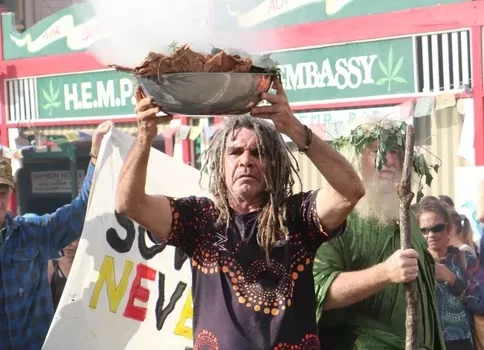


Johnny Allen literally wrote the book on event organising: Festivals and Special Event Management
The 1973 Aquarius Festival was closely linked to “back to nature” philosophies. Its purpose was to offer a space and purpose for people to convene, enabling the exchange of survival techniques and promoting an experience of “living in harmony with the natural environment” without causing harm to the land.
Individuals united for grassroots resistance, creating anti-hierarchical collectives and fostering solidarities among diverse groups that might not have interacted previously.
A prevalent aspect of the countercultural movement’s migration “back to nature” was not solely a compassionate recognition of the injustices from the colonial past but also a sincere eagerness to glean insights from the Indigenous inhabitants of the land.
In the early stages of Australia’s counterculture, there was minimal interest in Indigenous Australia, and the organisers of the AUS Aquarius Festival initially did not include them in their agenda.
Disheartened by student protestors seemingly unaware of local racial issues and concentrating on global injustices, Indigenous activists criticised them for hypocrisy. With their roots in the student movement and its alliances with the global Indigenous activist movement, organisers were compelled to reevaluate their priorities.
The impetus to involve Indigenous participants was spurred by the voices of empowered Indigenous activists such as Gary Foley. Although the counterculture organisers eventually demonstrated openness and unprecedented respect, due credit must be accorded to the efforts of Indigenous activists.
Gary Foley
Aquarius Festival directors Graeme Dunstan and Johnny Allen finalised the choice of Nimbin as the location and embarked on a tour of Australian universities to promote the forthcoming event. During the annual conference of the Australian Union of Students (AUS) in January 1973 at Monash University, Dunstan encountered Indigenous activist Gary Foley.
“Gary who confronted me with the question “have you asked permission from local Aboriginal folk?” This threw me into confusion because we had seen no Aboriginals in Nimbin” wrote Graham Dunstan.
Organisers had an ethical obligation to address inquiries regarding Indigenous permission and participation in the Aquarius Festival at Nimbin.
Gary Foley gained prominence for co-founding the Aboriginal Tent Embassy in Canberra in 1972 and for establishing the Aboriginal Legal Service in Redfern in the early 1970s. Foley had organised protests against the Springboks tour in 1971, responding to the Apartheid policies in South Africa.
The role of an activist is to stimulate action and provoke critical thought, and in this instance, it proved to be ultimately productive. Consequently, Indigenous people were not merely passive recipients of well-intentioned efforts but active catalysts for fostering meaningful cultural exchange.
The Nimbin curse
Organisers heard stories of Nimbin and the region being cursed or off-limits for women. This belief likely stemmed from the tradition associated with Nimbin Rocks, a rocky outcrop located one kilometre from Nimbin, designated as a place accessible only to specific men.
Tales of the Nimbin curse started circulating amongst a counterculture intrigued by mysticism. Organisers, anticipating the festival’s news to travel through the “lips of the counterculture,” were dismayed to observe how rapidly the negative news of the curse was spreading.



The news had reached the Indigenous community in Redfern, Sydney. Organisers encountered a hostile response due to accusations of cultural insensitivity, leading to negative publicity and allegations that the Australian Union of Students (AUS) was “violating sacred ground.”
Dunstan and Allen visited the nearby Woodenbong mission (near Muli Muli, and no, we’re not making up those names) to seek guidance from Elder Uncle Lyle Roberts. Establishing a connection with the local people meant traversing the significant social divide prevalent during that era of Australia’s history.
Paul Joseph, one of the early “hippies” who relocated to the area, mentioned that organisers made a subsequent journey to Woodenbong Mission to locate Dickee (Richard) Donnelly, a Song Man, who very happily accepted the invitation.
Since the ACA was already funding initiatives for the Aquarius Festival, organisers successfully secured two additional grants from the Aboriginal Arts Board specifically designated for Indigenous participation.
Organisers issued a callout through the AUS network to broaden cultural involvement, and it was suggested that they enlist the services of South African artist Bauxhau Stone.
Bauxhau Stone
Under the umbrella of these government grants, Bauxhau Stone carried out his work, embodying a convergence of contemporary issues. Acutely attuned to the global movement for racial equality and its pertinence to Australia, where conditions were deemed “really appalling,” Stone aimed to reshape Australian race relations by collaborating with the alternative arts movement.
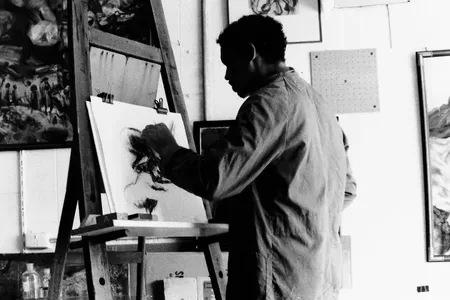

While his white Australian counterparts might have been unfamiliar with addressing the Indigenous racial issue, Stone actively participated and was well-suited to serve as a cultural envoy for the Aquarius Festival.
He visited several local missions and travelled as far as central Australia, extending invitations and informing individuals about ceremonies conducted by respected Elders.
“This one Bau, a remarkable fellow really, great artist, great character, he went all over Australia. He went to Pitjantjatjara, Yirrkala and we arranged buses and tents when they got here. We had a very large contingent of Aboriginal people come to the Aquarius Festival, thanks to Whitlam. (Joseph in Joseph and Henley)
Bauxhau, known as Bau, is a Kalahari Bushman from the Kalahari Desert in Southern Africa, living in Australia in exile to escape the Apartheid regime in his homeland. Bauxhau Stone still lives near Alice Springs. His influence on forging links with Indigenous Australians is legendary. Bau’s sister, Cheryl Stone, co-founded Bangarra Dance Theatre.
The first Welcome to Country
Embracing philosophies that celebrated collectivism, tribalism, a connection with the earth, and the utilization of ritual, the Indigenous involvement at the Aquarius Festival provided attendees with a unique opportunity to immerse themselves in these values.
Establishing authentic connections with Nimbin’s landscape required forming bonds with the Traditional Owners, making the presence of the last known initiated men of the area, Uncle Lyle Roberts and Uncle Dickee Donnely, a valuable and fortunate addition for participants.
These Elders embodied the final remnants of an ancient culture, orchestrating groundbreaking ceremonies, songs, teachings, and kindling a sacred fire for the new generation that arrived on their land. They warmly embraced the young people, expressing immense joy at their presence and perceiving it as a revolutionary shift.



Estimates of the Indigenous attendance at the event differ. Given the Festival’s duration of over two weeks, people arrived and departed at various times, making estimates dependent on memory, involvement, and perspectives.
With a rough total attendance estimate ranging from 5000 to 10,000, the specific number of Indigenous attendees was somewhere between 200 to 1000. Whatever the number, it reflects the convergence of Indigenous and non-Indigenous individuals on common ground in Australia in 1973.
For Indigenous attendees, the event presented a crucial opportunity to reconnect with their own communities, share their culture with eager recipients, and explore diverse facets of the counterculture.
Rhoda Roberts AO , a distinguished figure in Indigenous arts, coined the term “Welcome to Country,” contemplating the chance for Australians to cultivate respect and care for the country. This acknowledgment has gained broad acceptance, laying the foundation for a deeper layer of understanding.
Ernie Dingo and Richard Walley
Many erroneous media reports are attributing the first “Welcome to Country” to Richard Walley and Ernie Dingo who devised a ceremony for a contingent of Māori artists participating in the Perth International Arts Festival in 1976.
The Guardian and London Daily Mail and Australian Geographic also make the misleading claim. Even AAP Factcheck is misleading, not once but twice.
While Uncle Dingo and Walley’s ceremony was important because it continued and spread the tradition to a wider audience, Uncle Lyle Roberts and Uncle Dickee Donnely beat them to it by three years.
Related stories
The first “Welcome to Country” ceremony in Australia
Do you want to live on an Intentional Community?
The Block at Redfern, Sydney, site of the 2004 Redfern riots
New Cultural Rights Legislation targets fake Indigenous art
Artist and Activist, Uncle Bruce Shillingsworth
The Bulletin’s 2004 story on the Pinputi Nine
Uluru Statement from the heart & Paul Keating’s 1992 Redfern Speech

